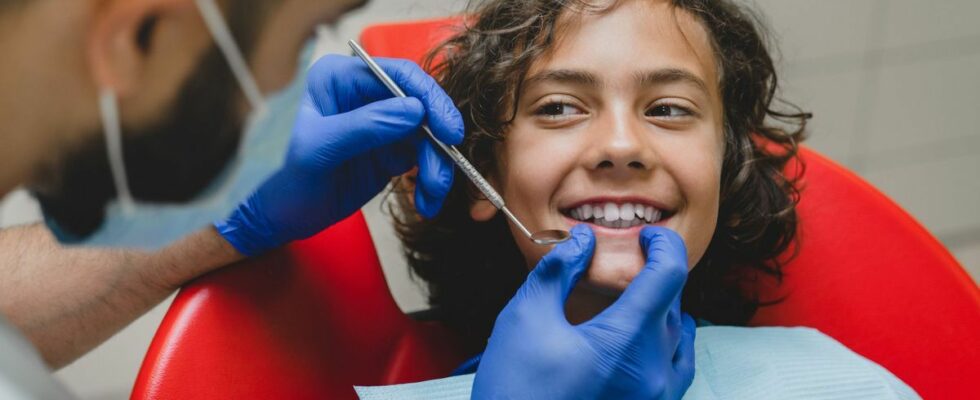Published on
Updated
Reading 2 min.
On TikTok, a pediatric dentist warns of a specific sign to detect in his child’s mouth to know if he needs dental braces. Explanations.
Overlapping teeth, excessive spacing, difficulty chewing or biting… There are many signs that indicate a child needs braces. However, other, less obvious, clues should be monitored to take care of your oral health. On TikTok, Doctor Sacha, pediatric dentist, shares a very practical tip to find out if your child needs (or not) dental appliances.
Fitting dental appliances: advice from Dr Sacha
On the social network, Dr Sacha, pediatric dentist, affirms that a simple gesture, carried out at home, would make it possible to analyze his child’s teeth.
“If your children are already 5 years old then you take your finger – clean, obviously – you put it here (on the side of the mouth) you spread the cheek and you ask him to swallow his saliva. If when you ask him to swallow his saliva you feel resistance on your finger, it means that he is contracting the chewing muscles and that is not good at all.” explains the pediatric dentist on Tiktok.
“Concretely, what’s happening? When you swallow your saliva correctly, you’re not supposed to use your mimic muscles at all. You’re just supposed to have the floor of your mouth go down a little little. In fact, if the mimic muscles intervene during swallowing, they will gradually deform his jaw and his jaw will be narrower Later, he will therefore need dental appliances,” warns the specialist.
Taking care of your child’s oral health: instructions for use
Beyond the installation of dental appliances, which is sometimes inevitable, certain good daily actions help prevent cavities, infections and other malformations:
- As soon as the first teeth appear, start brushing them gently (twice a day, morning and evening) with a children’s toothbrush and a little water.
- Starting at age two, use a small amount of fluoridated toothpaste (the size of a pea).
- Use dental floss (suitable for children) as soon as the teeth start to touch.
- Supervise brushing until your child is able to do it alone.
- If your child plays a sport that poses a high risk of contact, make sure they wear a mouthguard.
- Take your child to the dentist within six months after the child’s first teeth erupt or before the age of one.
- Discourage your child from prolonged thumb sucking or pacifier use, as these habits can affect the alignment of the teeth.
- Finally, use books, videos and games to explain the importance of oral health to your child in a fun way.
